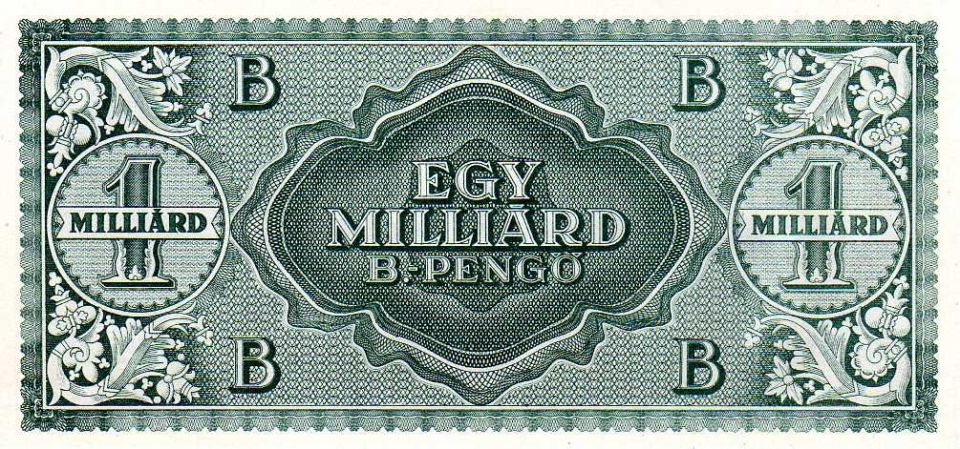On 10 July 1946, the Hungarian financial system collapsed. Inflation reached 400% per day, with all prices doubling in less than 15 hours. The exchange rate of one US dollar was equal to 59 billion pengös.
Hungary issued its own currency - the Hungarian korona after the collapse of the Austro-Hungarian Empire following World War I. Yet, with the economy destroyed, the korona lost its value very quickly, and in 1927 the government introduced a new currency, the pengö. The new money was pegged to the gold standard; the currency was hard and remained stable even after the Great Depression. However, with the arrival of German troops in Hungary the economy actually lost its independence and started to decline, so on 20 August 1945 the US dollar was equal to 1,320 pengös. There was nothing the Hungarian government could really do and by the end of the year, one dollar was equal to 128,000 pengös. Subsequently, banknotes of 10 million pengö appeared in circulation. Million pengö banknotes, or milpengő, were issued, followed by b-pengő, one billion pengős (pronunciation: bilpengő, in mathematics that corresponds to one trillion [1,000,000,000,000] pengős). The government prepared the world’s largest banknote with the denomination of one milliard b.-pengős (one sextillion or 1021 pengős), but it wasn't issued - the government had almost run out of paper to produce money.
The Hungarian financial meltdown is record-breaking in the history of the world economy. In June 1946, Hungarian Prime Minister Ferenc Nagy in Washington, DC, decided to return the Hungarian gold reserve to strengthen the national economy. On August 6 of the same year, a train carrying $32 million worth of gold would arrive in Budapest from Frankfurt. On 1 August 1946, a new currency, the forint, would be introduced. The exchange rate of the old money for the new one would be 400 octillion (4 × 1029:1) pengös for 1 forint. It was an absolute world record.
Despite the catastrophic situation, inflation was halted in less than a year. By that time Hungary was almost destroyed – the economy was war-torn, and living standards could hardly get any worse. The economic recklessness of the elites, which had started fighting for power in the country ignoring the poverty-stricken population, was the reason for the economic disaster.
Source:
Inflation and Economic Growth. Theory and Practice. Moscow: Finance and Statistics, 2007.
























